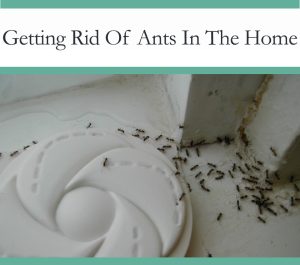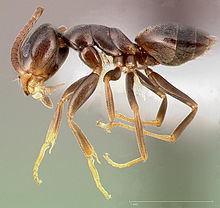Do Ants Have Wings?
October 17th 2019, by Dan Crosfield
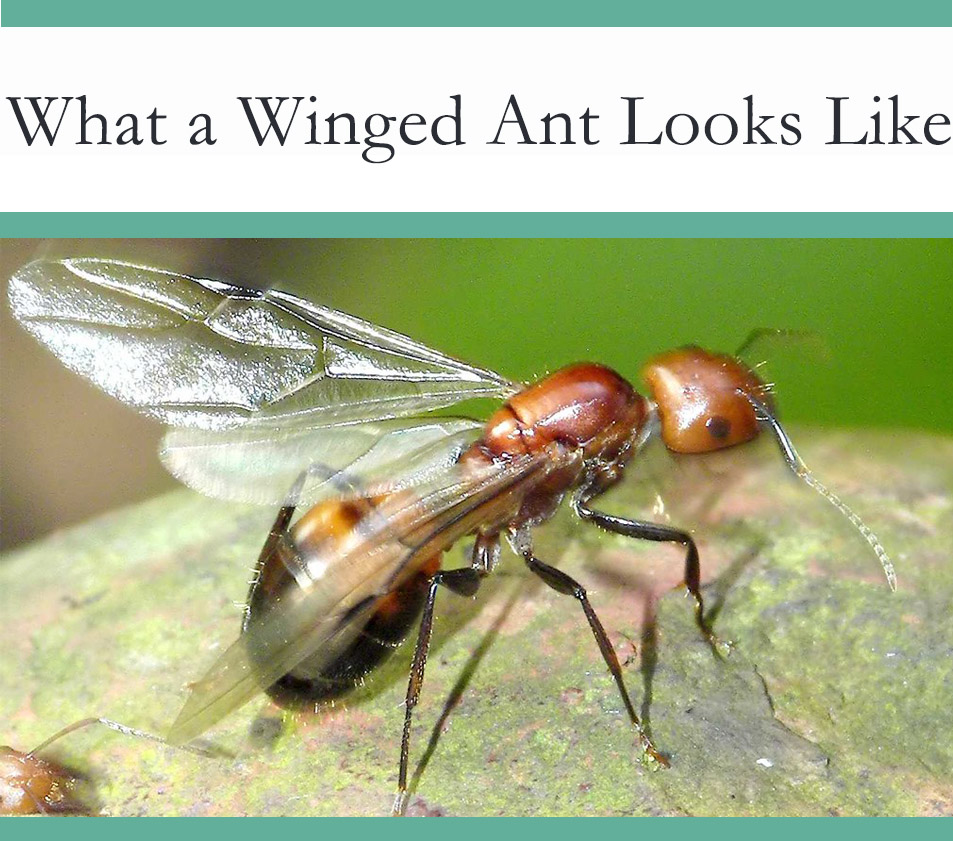
Think you saw a swarm of ants with wings and are you wondering what they are and why they fly?
Normally, we think of ants as wingless creatures. They get around by walking, and are usually encountered at ground level or crawling up walls.
But ants are closely related to wasps, and this is rarely more obvious than in the case of flying ants. Some ants do indeed have wings, at least at certain times of the year. So if you think you’ve seen a winged ant, you’re probably right. Some ant species can grow wings and use them to fly.
Often, flying ants emerge in large numbers and take to the sky en masse. This is part of the reproductive cycle of the colony. Flying ants are the reproductive members of the colony, responsible for creating new nests. While worker ants stay on the ground taking care of the nest, the flying ant is part of the reproductive cycle of an ant colony.

It’s important to note that not all species of ant engage in this behavior. Some types create new nests by a process known as budding instead. This is when a queen leaves the nest with a group of workers and sets out to find a new territory of her own. Usually, this behavior takes place in species that have multiple queens per colony, such as Pharaoh ants.
But for other ant species, usually those with a single queen, ants swarm as part of typical reproductive behavior. And in areas with a high population of ants, these swarms can be a spectacular sight. On a clear and windless day, thousands of female and male winged ants can take to the sky.
Sometimes, ant swarms are so big that they can be detected by weather radar.
How to Get Rid of Flying Ants
When it comes to getting rid of flying ants, you can combat obvious swarms of these winged insects with a vacuum cleaner, but the most effective method is by tackling them with a multi product Combination Ant Control Kit. This kit includes a spray for direct control but it also allows you to provide multiple baiting options for more structural control. The kit works well for controlling both sugar-loving ants as well as grease eating ants, including winged ants. It is the best remedy against all of the most common ant types that live in the USA. The kit includes baiting stations as well to allow for the easy application of the baits indoors as well as outdoors without making a mess or damaging your home. It can also be used against foraging worker ants as well as swarming ants seeking a new place for a nest.
[i2pc][i2pros]Covers all areas of ant control Every product you need in one kit Provides both direct and structural ant control Easy and clean for indoor + outdoor use Child and Pet friendly ant control Very Effective with all ant types [/i2pros][i2cons]It is more expensive to buy than one single bait [/i2cons][/i2pc]Why Ants Fly
Ants have a fascinating lifecycle and colonies operate under a rigid caste system in which each individual has a clearly defined role. The vast majority of these insects are sterile females. Incapable of reproduction, these sisters perform most of the tasks needed to keep the colony going, such as foraging for food and tending to the queen and the juvenile ants.
Winged ants are seeking to breed and reproduce. Flying ants may be male (the drone) or female (the queen).
The queen is the only member of the colony capable of reproducing – at least for most of the year. Once a queen establishes a colony, she rarely leaves again. She’ll spend the rest of her life producing eggs to help the colony grow.
Most of these eggs will hatch into sterile females. However, the queen is also capable of laying unfertilized eggs, which will develop into male ants. Fertilized eggs will usually develop into sterile female ants, but if the larvae are fed a particularly rich diet, they can develop into reproductive females, destined to become queens themselves.
When weather conditions are just right, these winged reproductive ants emerge from the colony and take to the sky in swarms. The females release a pheromone trail that the males follow, while the females attempt to escape the males. This ensures that only the strongest and fittest males reach the females and reproduce. It also allows ants to mate with individuals from other colonies which would normally fight one another.
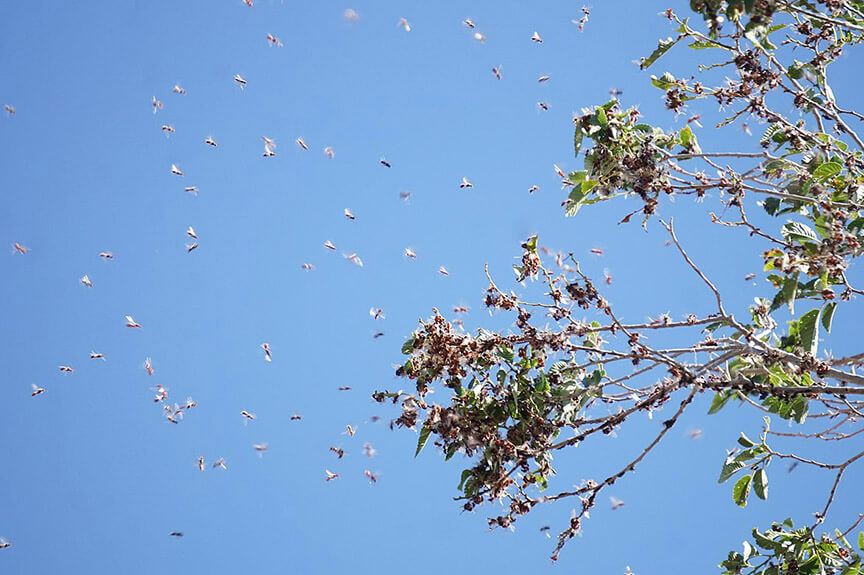
The life of a male ant is brief. After swarming, called the nuptial flight, the male ants die. They perform no role in the life of the colony beyond fertilizing the females. The females, on the other hand, will fly off and start nests of their own. They chew their wings off and find somewhere safe to hide, where they begin producing eggs. The queens survive by re-absorbing the muscles that powered their wings for food while they wait for their first batch of eggs to hatch. The eggs hatch as workers, and a new colony begins.
If ant larvae are fed a particularly rich diet, they can develop into reproductive females
Species That Swarm
Ants are a very diverse group of insects, and behavior can vary a lot between different species. As mentioned above, some ant species don’t reproduce via swarming, and therefore don’t produce flying ants. But some of the most commonly encountered types of ant reproduce in this way. Moisture, carpenter ants, odorous house ants, pavement ants, and fire ants all produce winged reproductives.
Moisture Ants with wings

Also known as the little black ant, garden ants, and many other names, this extremely common group of ants is often responsible for large swarms capable of interrupting major sports events and showing up on weather reports. Black ants with wings exist in the colony from the middle of summer into the fall, and mating often occurs inside the nest before the swarm even begins.
Swarms typically occur from July through to September. After swarming, mated queens burrow into soil or rotten wood and spend the winter alone, not laying eggs until the following spring.
Flying Carpenter Ants
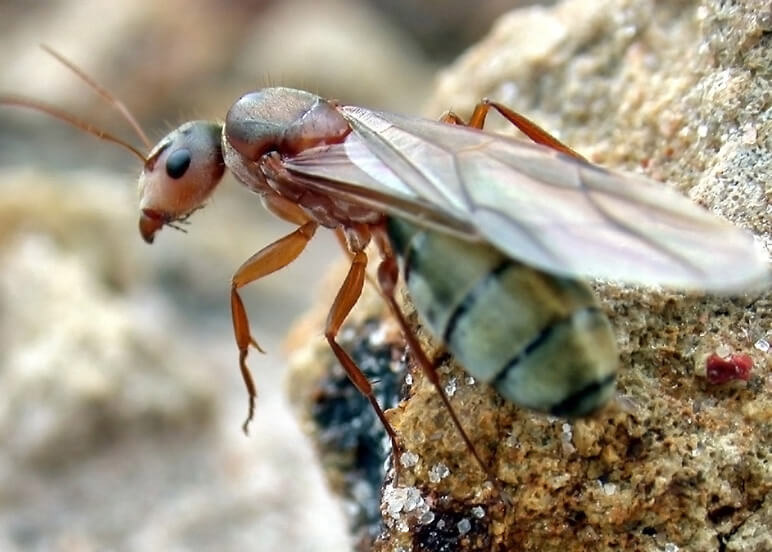
Carpenter ants already are the largest species in North America. While carpenter ant workers can be over half an inch in length, winged reproductives can be closer to an inch. This makes the emergence of these ants a striking sight.
To produce winged reproductives, nests must be fully mature. In the eastern part of the continent, this means a minimum of around four years old. In the West, it’s closer to 6 to 10 years. This may seem like a long time in the life of an insect, but queens of this species can live for over 20 years.
Winged carpenter ants can be close to an inch in size
Winged members of the colony don’t emerge as soon as they are born. Instead, they stay in the colony through the winter and are released the following year. This period allows the ovaries of the females to mature and become ready to reproduce. The eastern subspecies usually begin swarming around May, whereas the Western subspecies can start as early as February. It’s the male ants that determine whether conditions are right to swarm. They will emerge from the nest to check the weather, and if it seems right, they will release a pheromone that stimulates the females to emerge too. Often, the males will need to check multiple days before finding one that is right for swarming. And when people have a nest of these ants in their home, it’s often the emergence of males like this that is the first sign of the presence of these bugs.
Like other ants, the males die off after the nuptial flight. The newly mated queens will seek out a nest site, often in damp and water damaged wood that is easy for them to chew through. The queen’s first batch of eggs will contain 10 to 16 eggs, which she will feed by metabolizing her flight muscles. It takes between 6 to 12 weeks for these first few eggs to emerge as adults, and the queen will tend to them herself, even helping them emerge from their cocoons to become adults. Only once this first generation of workers is active can the queen concentrate on her primary purpose of laying more eggs.
Odorous House Ants
The Odorous house ant is also a very common species. Found both indoors and outdoors, these ants will often nest in soil underneath objects such as lumber and woodpiles. Indoors, they usually stay close to sources of moisture such as heat and water pipes.
These ants can have multiple queens to a colony, and a single colony can contain up to 100,000 individual ants. Odorous house ants are unusual in that the colonies reproduce by both budding and swarming. Because they have multiple queens, an individual queen can split off from the colony at any time to find a territory of her own.
But they also swarm, with reproductive’s usually appearing from May to mid-July. Interestingly, different colonies of these ants are not hostile to one another and do not battle for territory in the same way as some other species do.
Pavement Ants
Pavement ants are another species with multiple queens. Winged Pavement ants typically emerge outdoors in June and July, where they will take flight and mate like other species. However, these ants can also be found indoors. They prefer to nest under pavement and concrete, and often enter homes through cracks in the foundation. In fact, homeowners are often unaware of the presence of these ants until the winged reproductives emerge. And if the nest is indoors, the heat of the home can lead to swarmers appearing at almost any time of year.
Winged Pavement ants typically emerge outdoors in June and July, where they will take flight and mate.
Fire Ants

This notorious species gets its name from its ability to inflict a painful burning sting when it feels threatened. Colonies can have a single queen or multiple queens, but in either case, they reproduce by swarming.
Single queens are capable of producing up to 1500 eggs per day, and colonies can produce winged reproductives after a year or two.
Colonies can produce over 4000 swarmers per year, and 6 to 8 flights usually take place between spring and fall.
Fire ants can be quite particular in its swarming behavior. Flights typically begin around 10 AM, a day or two after the last rain in temperatures of about 75°F. The ants also like it to be sunny and with minimal wind.
Fly-in Queens
Ant swarms can be an impressive natural phenomenon. However, the swarming behavior presents a challenge from a pest control perspective.
This is especially true in the case of fire ants. Thanks to the size of the colonies, that can contain up to 500,000 individuals, and their habit of moving their nests from one location to another, these are already very difficult critters to control. But if you do manage to clear your property of fire ants and their unsightly mounds, you can never be sure that they won’t return. Any given summer, a mated queen can drop out of the sky and create a new nest on your property. These fly-in queens are one of the reasons that fire ant problems seem to recur year after year.
After all, these insects are territorial. By removing fire ants from your property, you make it more inviting for new queens looking for a territory of their own. Why go somewhere and battle with existing populations when you can establish a home where there are no competitors?
Unfortunately, there’s not very much you can do as a homeowner to prevent these fly-in queens. If you live on a property that’s susceptible to infestation by these creatures, you may find that you need to perform treatments every year to keep their numbers in check.
Can Flying Ants Bite?
The sight of thousands of swarming ants filling the air can create a lot of panic in people who encounter it. However, when treating ants, the flying variety are of little concern. It’s the workers and the queen that stay behind that need to be eradicated to destroy the colony. The reproductive ants will simply fly away, so there’s no need to try and treat these creatures.
Flying queen ants are not agressive and only have reproduction on their mind.
It’s important to remember that flying ants only have reproduction on their minds. They are not looking for food, and have no interest in your picnic or barbecue. Also, unlike their wasp cousins, they are not in the least bit aggressive. They won’t bite unless you capture one. And even then, most species can’t bite hard enough to break human skin. Carpenter and fire ants are the exceptions here, as they are capable of hurting people. However, this reproductive caste has no interest in humans, and are busy chasing one another. When they come into contact with us at all, it’s purely by accident.
Do Termites Have Wings?
As highly social insects, termites share many traits and behaviors with ants. But although they are sometimes called white ants, termites are in fact completely different creatures. They are more closely related to cockroaches than they are to true ants. Nevertheless, termites do indeed reproduce by swarming, just like ants do.
Termites indeed reproduce by swarming, just like ants do.
If you’re wondering whether the flying bugs you’re seeing are flying ants or termites, there are few ways to tell them apart. All ants have clearly defined narrow waists, whereas a termites body is more or less straight in shape with no significant waist to be seen. Also, termites have straight antenna, whereas ants have a joint in their antenna.
Finally, while both types of insect have two sets of wings, the hind wings of an ant are smaller than the front wings. In a termite, the wings will be the same size.
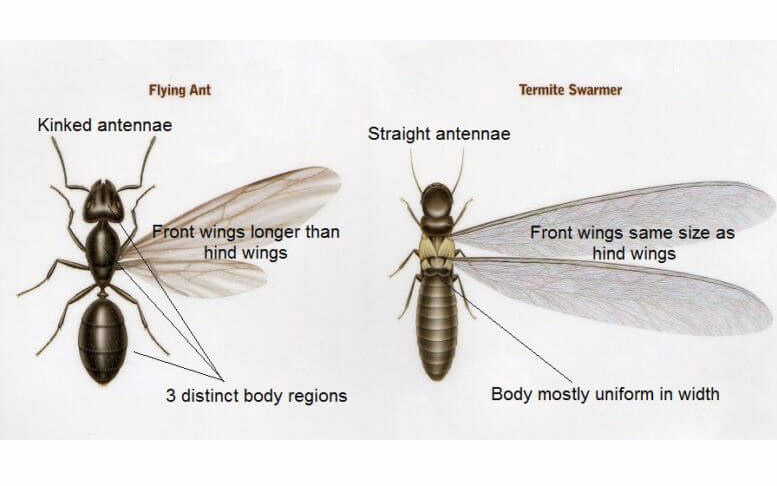
Conclusion
Not all ants have wings. And among the species that do, most of the individuals in the colony are wingless and incapable of flight. However, at certain points in the colony’s lifecycle, flying ants can emerge. So if you’re wondering if the creatures you see are ants with wings, you may be right.
Flying ants are part of the natural cycle of ant reproduction. By themselves, they needn’t be a cause for alarm. Although they are clumsy flyers, swarmers can travel a long way, especially if they catch a gust of wind. The presence of winged reproductives outside your home does not necessarily indicate a pest problem that needs to be dealt with.
However, reproductives are on a mission to start new colonies. If you’re trying to have an ant-free home, this could be a problem. There’s not a lot you can do about a swarm once it’s started. An aerosol spray will knock down any airborne ants it contacts, but there’ll be plenty more where they came from. In fact, part of the reason these creatures engage in swarming behavior is for the safety that numbers provide. You can kill a lot of these critters without making any difference to the swarm or the colony that produced it.
However, if you see large numbers of these bugs inside your home, it may indicate the presence of a more serious problem. After all, winged reproductives emerge from a mature colony. If large numbers of them are showing up in your home, it may be a sign that you have a nest indoors.
Winged reproductives are attracted to light. So the location you see them most often in your house may not give you a true picture of where they’re coming from.
Once they emerge, the winged bugs will often be found around windows and other light sources. But take a look around your home to see if you can determine where they’re coming from. The gap around a water pipe or crack in a wall could be the entrance to a colony that you never knew you had.
If the swarm is outside, you may not need to worry. Try to enjoy the spectacle of these ants taking to the air. After all, it’s all part of the natural cycle.


